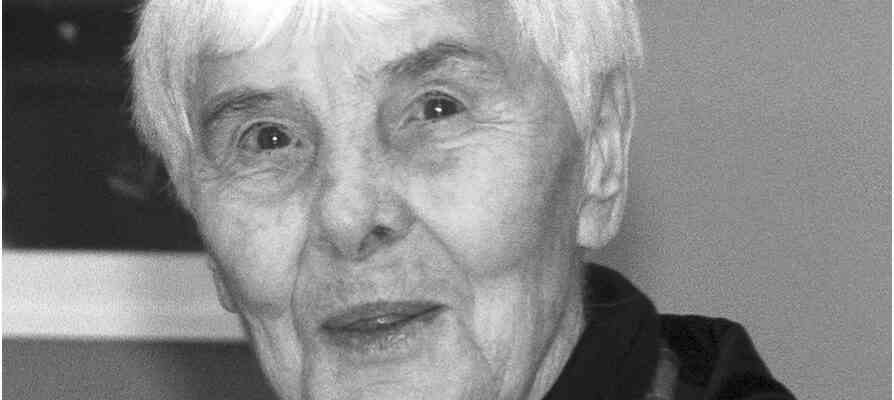Else Bechteler-Moses didn’t like to talk about herself and her successes. Almost two years ago, when she visited her Schwabing apartment, she said that was not usual in her family. In general: “No one knows me anymore. And I’ve never really been known anyway.” A statement that is at best true in direct comparison with the degree of fame of her husband, the photographer Stefan Moses (1928-2018). Otherwise, a look at the abundance of their works or the numerous participation in exhibitions refutes this claim.
The Munich artist created highly idiosyncratic pictorial works of suggestive radiance, mostly not with the brush but with the loom. She was born in Berlin in 1933, the daughter of the sculptor Theo Bechteler and the textile worker Elfriede Kristeleit. After the war, the family moved to Immenstadt, the father’s birthplace. In 1949, at the age of 16, she began an apprenticeship in a hand weaving workshop in the Allgäu, made patchwork rugs, and learned how to dye and weave fabrics. “The foundations for everything I do later,” as she said.
But she was not satisfied with just her craft. After the journeyman’s examination, she went to Berlin, attended the master school for arts and crafts, worked in various workshops and then decided to study painting with Franz Nagel in Munich. When she left the academy in 1964 as a master student, she already suspected that she would not create her paintings with a brush but with a loom.
At first she was content with small, abstract tapestries. “Light” is what she called her first space-related work, a tapestry for the in-house chapel of the Kaufbeuren district hospital. She slowly groped her way forward. Enthusiastic about the merging blue and green tones of the landscape in Sweden, which she discovered for herself in the summer of 1968, she developed the “Flag Forest”, a group of works made of long, narrow, almost transparent-looking lengths of fabric. The light-flooded, walk-in room installation represented a completely new approach for textile art and was invited to many exhibitions.
Else Bechteler couldn’t let go of the landscape theme. She created extensively composed tapestries with clear areas of color and swinging outlines. Not a strict rectangular shape, as we were used to from tapestries, but completely freely designed, often organic-looking fabrics in which the artist experimented with gaps and free areas that left the warp threads visible.
In the 1980s and 1990s, the small, petite woman was showered with public contracts. Weaving is very physically demanding work, especially since some of her works are of truly monumental size. For three years she wove the “Elevated Lord”, a three-part tapestry, more than ten meters high and almost five meters wide, for the St. Hedwig’s Cathedral in Berlin. While working on this commission, she met Stefan Moses, who one day visited her in her studio on Preysingstrasse. In 1985 the two married.
The last major work that she wove with her own hands on a large loom in 1995 was “Floating Wings”. Like the forest of flags, it hangs freely in the room, only then do the finely graded red tones unfold their warm power. When their cooperation partner, the Nuremberg Gobelin Manufactory, closed in 2004, it became difficult to realize large works. For a while there are still small weavings, splendid color studies. But from 2010 onwards she has dedicated herself exclusively to the “knitting pictures”, nothing but small, loosely woven parts that she combines into fine collages.
Else Bechteler-Moses died on January 26, a few weeks before her 90th birthday. She leaves behind a great work that should not be forgotten.

